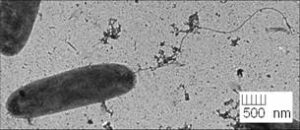 Chemotactic interactions of Marinobacter adhaerens with diatom cells
Chemotactic interactions of Marinobacter adhaerens with diatom cells
Aggregation of microalgae, mainly of diatoms, is an important process in marine pelagic systems, often terminating phytoplankton blooms and leading to the sinking of particulate organic matter in the form of marine snow. To reveal the importance of diatom-bacteria interactions for aggregate formation, a model system will be established. The model diatom for such a system is Thalassiosira weissflogii. The bacterial model strain is selected due to highest production of transparent exopolymer particles (TEP) and aggregates during incubation with the diatom and best genetic accessibility. Genetic and biochemical approaches are used to characterize the model system. The effect of diatom products on the bacteria will be tested by plate swarming and growth assays. Random mutagenesis will be used to identify genetic loci for chemotaxis and motility (flagella/pili biosynthesis) on the bacterial genome. Finally, rolling tank experiments will be conducted to test the impact of bacterial motility and chemotaxis on aggregate formation. Results of this study will indicate whether changes in the bacteria-phytoplankton interactions influence the flux and cycling of nutrients and carbon during marine snow formation and which cellular factors contribute to these interactions.
TEM pictures of the two bacterial strains selected due to best aggregate formation with the diatom (source: Yannic Ramaye)

